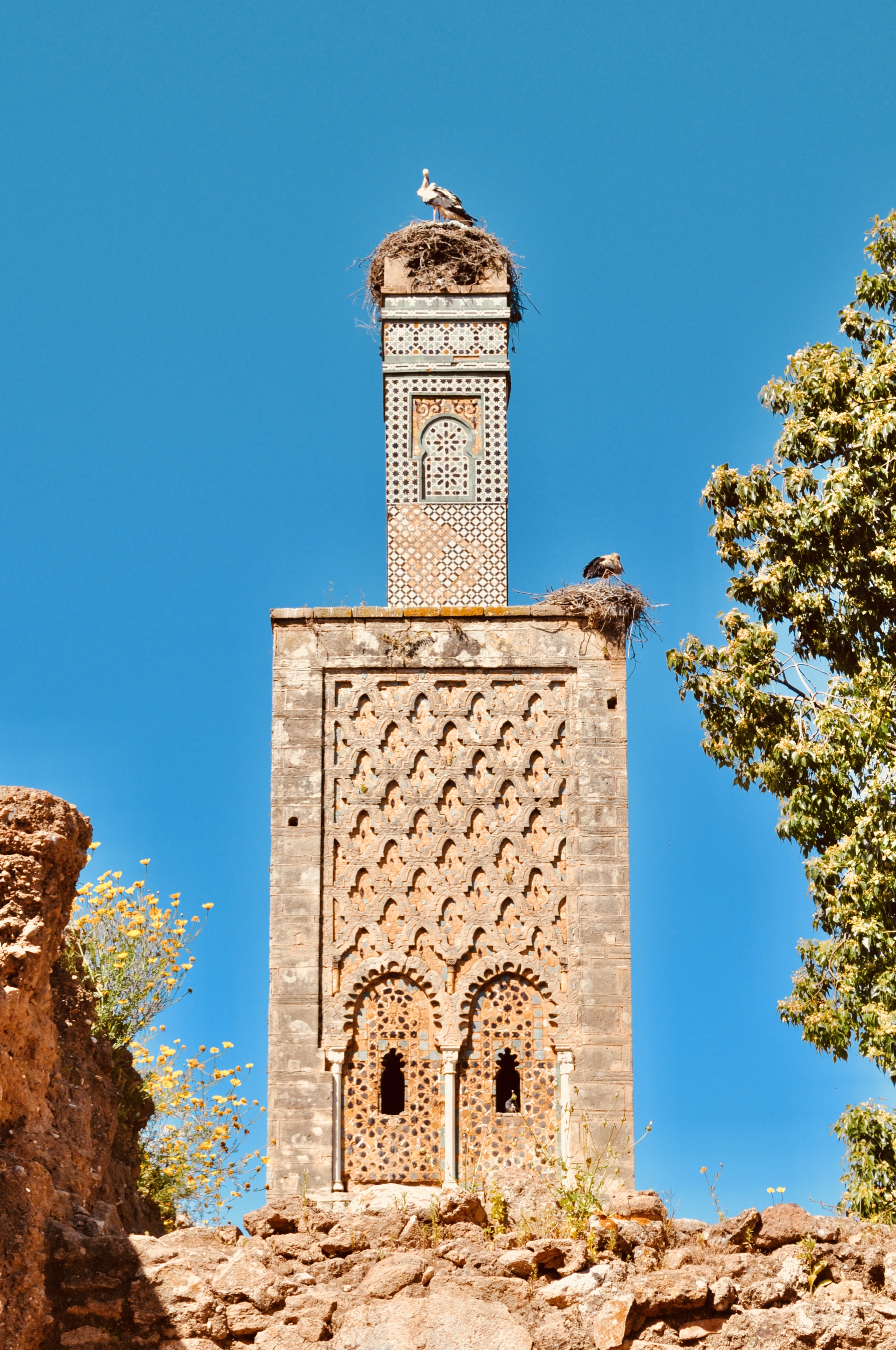
By Gabe Roy
[divider]
Lonely Planet told me this about Morocco: I’d be overwhelmed by ornate zellige tiles, enchanted by ancient ruins, and forced, perhaps uncomfortably, to adapt my behavior to that befitting a Muslim-majority country. It seems my guidebook reductively neglected to treat Morocco with the nuance it deserves, overlooking the reality of archaeological preservation in a developing country and ignoring Morocco’s unbelievable progressivism and religious pluralism.
***
The Chellah, far removed from Rabat’s modernity and scenically tucked between gentle slopes, is an imposing structure demarcated by towering terra cotta defensive walls. Initially the militarily strategic post of the Phoenicians, the Chellah once also hosted Romans and Muslim conquerors, who left behind Latin funeraries, doric columns, fragmented marble statues, and the remains of a once striking necropolis and mosque.

I expected the Chellah to transport me to ancient Maghreb, where I might incarnate myself a Roman dignitary in a diaphanous tunic, or a Quranic student prostrate before an omnipotent Marinid sultan. Seemingly confirming the possibility of such an experience, our drive up to the ruins took us through a timeless pastoral landscape, where men wielding heavy scythes herded lethargic sheep across arid hills.

My idealistic vision of the Chellah’s preservation, though, did not account for the financial restraints of a developing country. So when I arrived at the center of the Chellah, I was dismayed to see rubble and ruin — the antithesis of the wondrous world I had imaginatively constructed. Nature was rapidly and unapologetically reclaiming the grandeur of Morocco’s ancient societies: grime coated intricate mosaic floors over which thorny weeds multiplied; spindly-legged storks’ behemoth nests adorned the tops of every archway, column, and minaret; and cats with brilliant, piercing eyes silently patrolled a dilapidated domain. I was shocked and disturbed, too, at the utter lack of surveillance, enabling curious tourists to stomp through crumbling courtyards in desperate need of restoration.


Lonely Planet advertised some fabulously-preserved relics of Morocco’s ancient times, but my guidebook had not warned me of the Chellah’s deteriorating condition. I wondered — how many more historic Moroccan landmarks were destined for the same tragic fate? And how many were already lost? Perhaps we, as tourists, ought to shift our attention from those sites already saturated with visitors to those landmarks which sorely need the government’s financial support.
***
I was further advised by Lonely Planet to reconcile my comportment with Islam’s conservatism. This rightfully perplexed me, as I found I truly had nothing to conceal in Morocco.
Of course, there was still the mascara incident. While shopping for soap at Yves Rocher, a French cosmetics store, I added to my basket the mascara my travel companion wished to purchase so as to satisfy the 100 dirham card minimum. Ordinarily, this would incite little to no reaction, but my cashier was revolted: she held my credit card as if it carried disease and averted her eyes when she condescendingly thanked me for my purchase.
Generally, though, I felt I could be open about my sexual and religious identity. Even after receiving the horrific news that 60 Palestinians had been killed at the Gaza-Israel border, I felt comfortable pursuing a story about Morocco’s Jewish community and even, perhaps naively, revealing my own Jewishness. Every Muslim Moroccan with whom I discussed my article responded the same way, as if following a script: “We love the Jews here! You are welcome here.”

There is some debate about the sincerity of the admiration with which Morocco’s kings have historically smothered the Jewish community, but there’s no mistaking the extraordinary display of religious tolerance and pluralism I witnessed on my last day in Morocco. I was invited to a “Ftour Pluriel,” an interfaith Ramadan break-fast honoring eminent Moroccans – from cultural conservateurs to the King’s senior advisor – for encouraging interreligious dialogue. In a particularly moving moment, a Vatican nuncio embraced an imam and a rabbi before rapt invitees.
I can’t claim to have enjoyed a Moroccan experience accessible to the average tourist. Nonetheless, I categorically discourage future visitors to Morocco to travel the way of the guidebook. Traveling is a unique experience impossible to transcribe and condense in the form a hundred-page book. Attempting such a reductive treatment of a country will only produce a text riddled with inaccuracies.
My advice: discard what you’ve heard or read and see Morocco for yourself — in more realms than archaeology and spirituality, you’ll be surprised at what you discovered.
[hr]
Gabe is a rising sophomore in TD. You can contact him at gabe.roy@yale.edu.